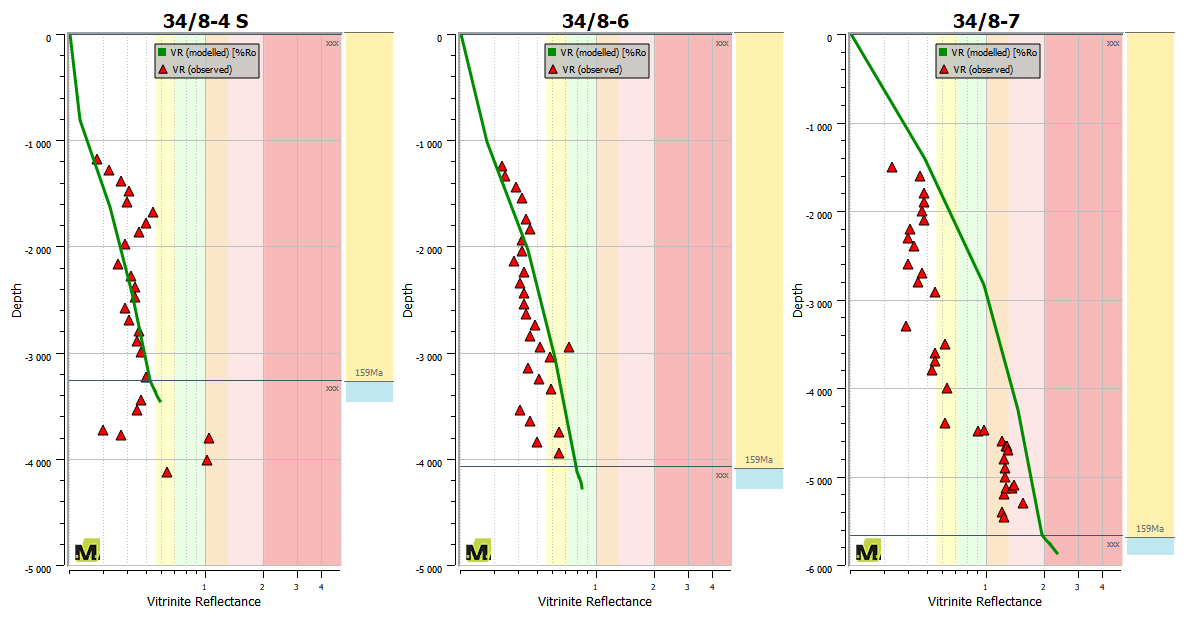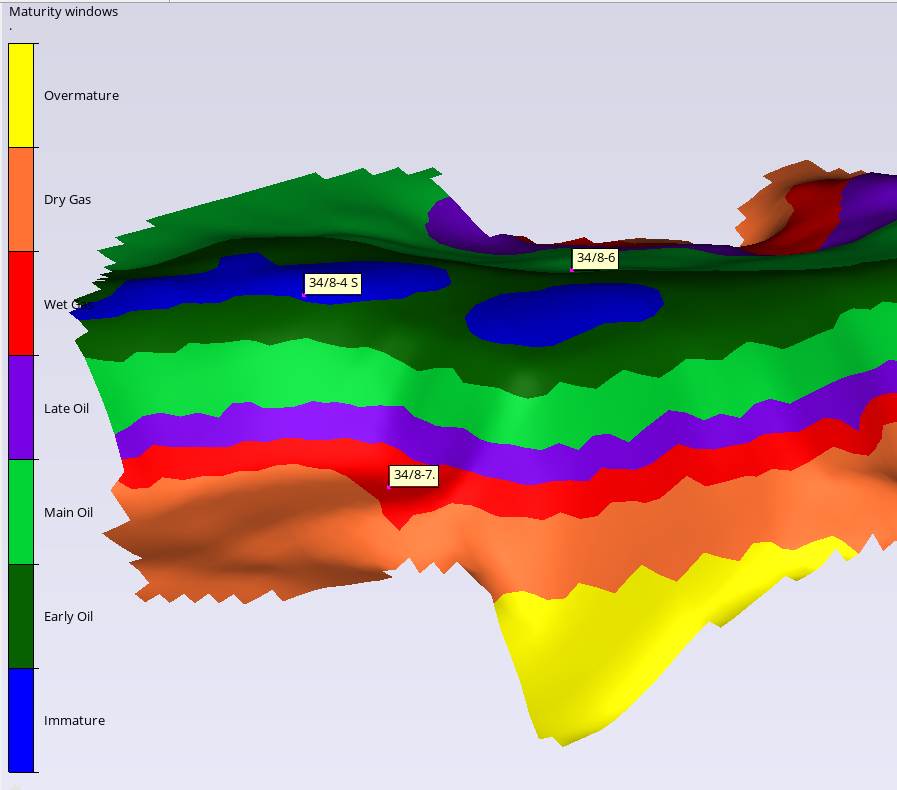Source Rock Maturity and Maturity Evaluation
Source rock maturity is commonly reflected in two features: temperature and the duration of favorable conditions for hydrocarbon generation. In Migri and MigriX you can estimate the maturities of the source rocks, supporting the potential for charge into the traps.
Source rock maturity evaluation in Migri and MigriX
The maturity of source rock well-samples is often measured by the vitrinite reflectance (VR). Kinetic models, showing the increase in maturity because of thermal stress, are used to model the vitrinite reflectance for well samples during increased burial. This is an established methodology, however, some degree of uncertainty in the data is observed.
In Migri and MigriX, vitrinite reflectance maps are plotted for each modelled timestep, and can be evaluated as the temperatures increase during burial. At the end of the simulation run, a complete burial history for any point in the basin can be extracted and temperatures and vitrinite reflectance can be plotted and compared to the observed VR measurements.
Highly adjustable models
In Migri, an iterative approach can be used to improve the calibration of the maturity model, by automatically adjusting the thermal input parameters. MigriX allows for very fast manual adjustments of the thermal input parameters, ensuring that a range of uncertainties can be investigated.
The effect of thermal anomalies can be investigated both in time (thermal events) and by varying the lateral temperature gradients. A well calibration panel (Fig. 1) can be plotted after each simulation run, to quickly compare the continuously modelled VR (green lines) to the observed VR data points (red triangles). Oil and gas maturity windows modelled in Migri and MigriX (Fig. 2) is a convenient way of plotting the source rock maturity as part of the maturity evaluation.

Fig. 1
Adjust thermal exposure and rerun the maturity evaluation
When a single well is poorly calibrated because the modelled VR is too high, MigriX allows you to quickly decrease the thermal exposure (geothermal gradient) in that area and rerun the simulation. This allows you to improve the modelled data’s match to the observed data. Thermal uncertainties can also be investigated by constructing low and high thermal scenarios for VR modelling. Once these high and low scenarios have been simulated, mature plots can be compared.

Fig. 2
Interested in our software? Try downloading it for free here >> or read more about it here >>
